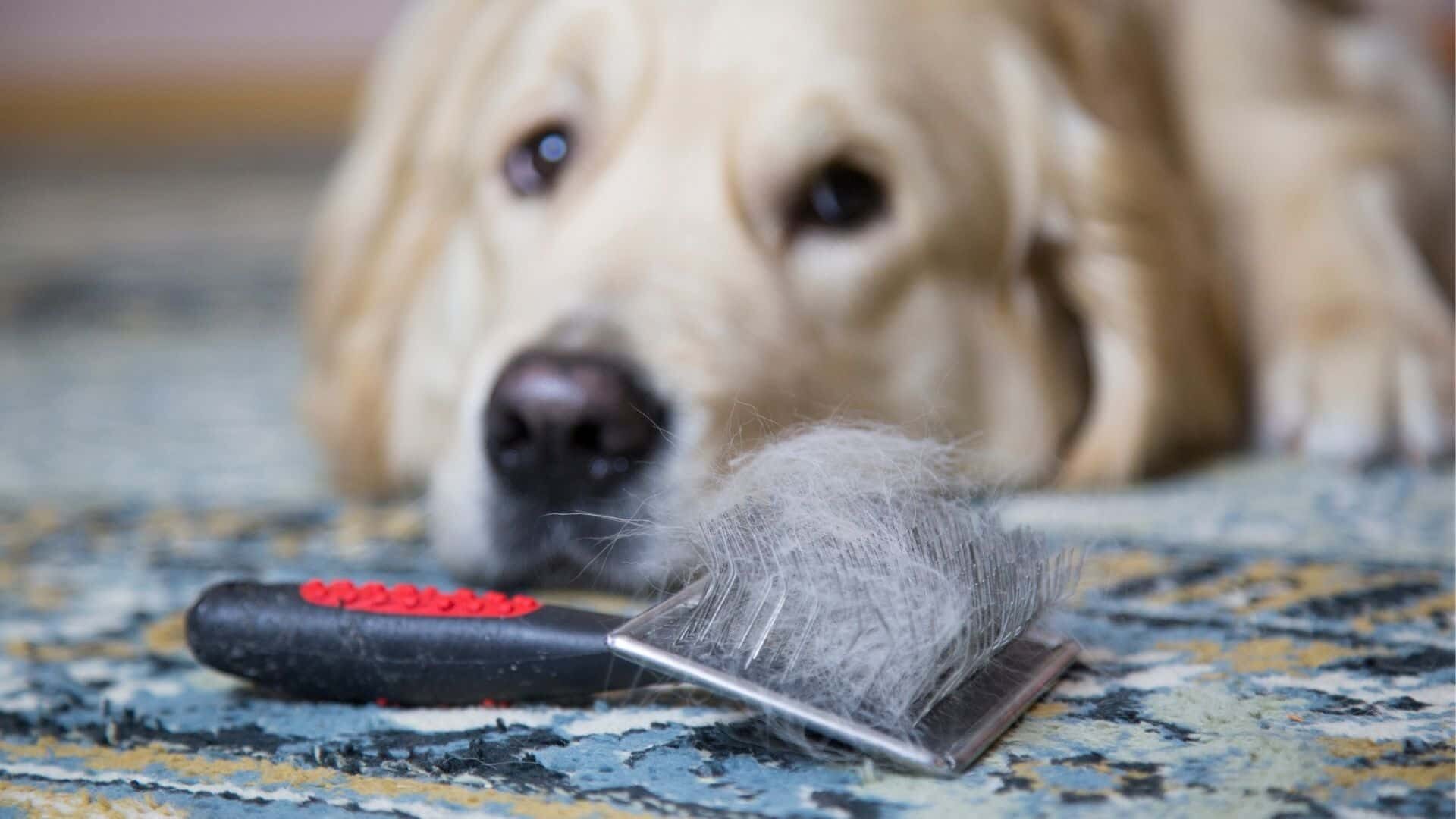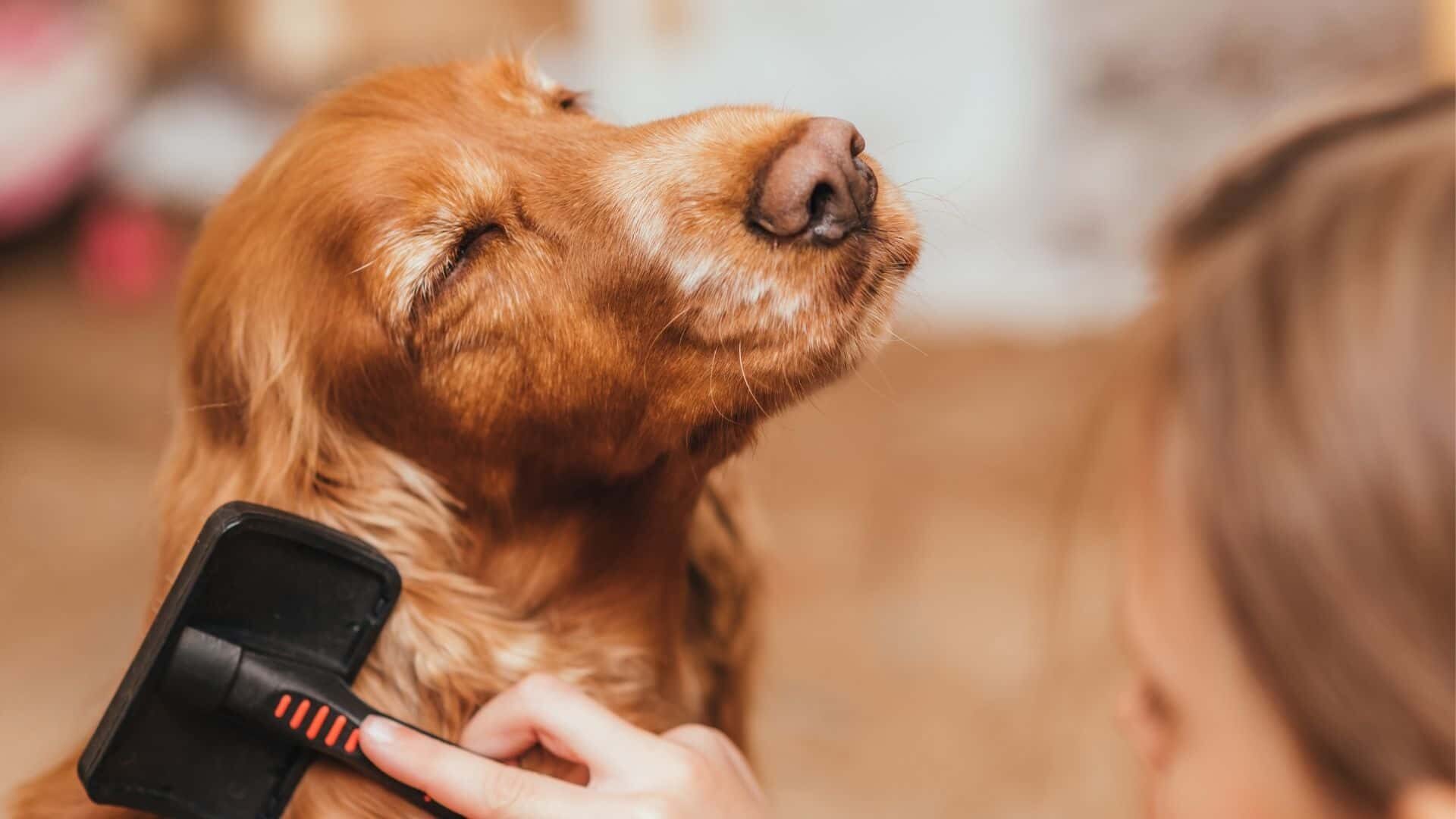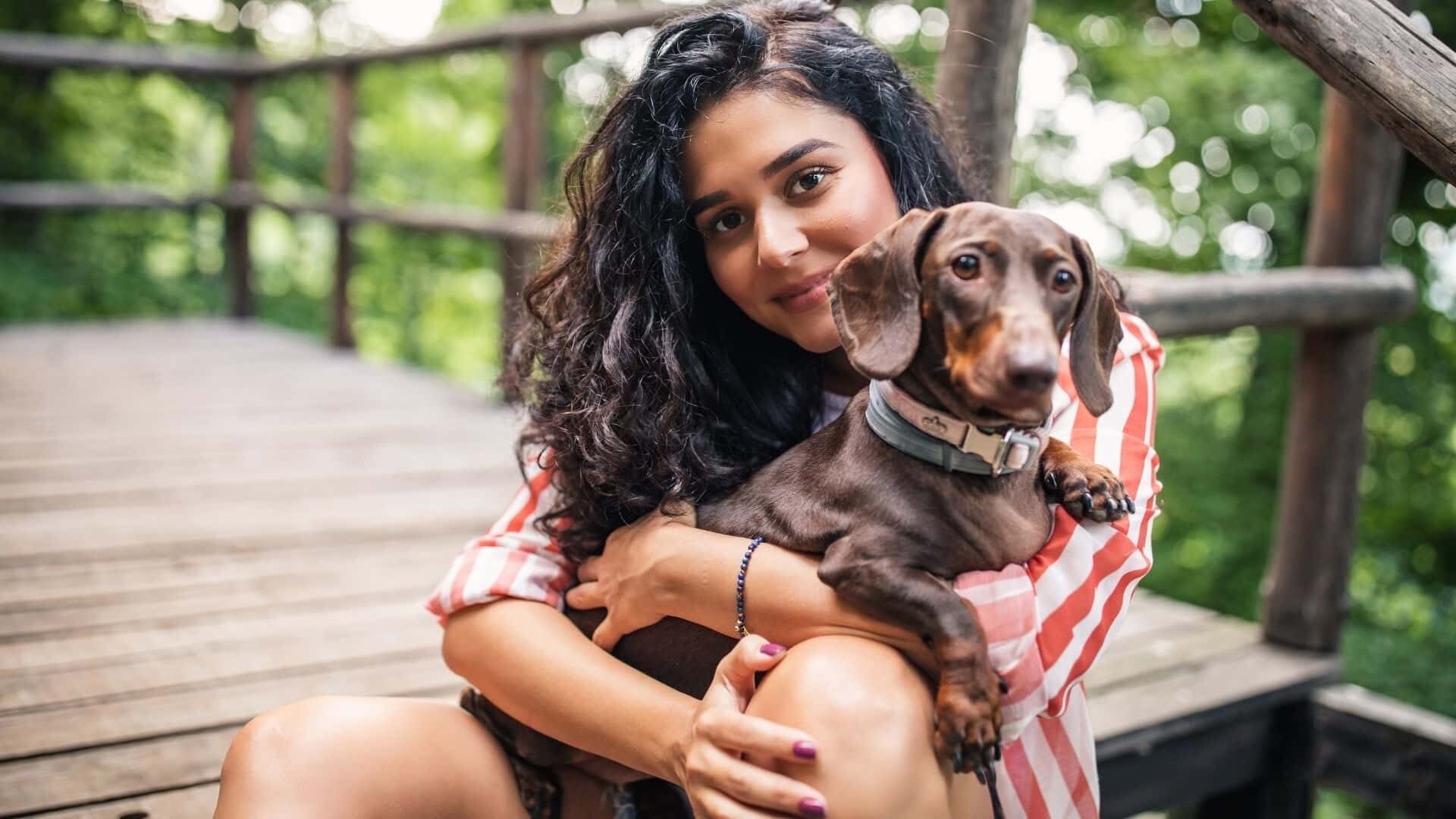Here’s what you need to know about how fast dog hair grows. The hair on a dog is one of its most distinctive features, helping to distinguish one breed from another. Grooming your dog includes trimming their hair. Some situations necessitate shaving the entire head of hair. Even so, it will eventually grow out. If you’re wondering how long it takes for dog hair to regrow, you should first learn about the different types of fur, hair, and coats.
If your dog has lost hair as a result of an accident at the groomer or an allergy to food, it will grow back. The length of time it takes for your dog’s hair to grow back depends on a variety of factors, including his age and the length of his hair.
If you don’t understand your pet’s growth, you won’t be able to accurately estimate how long it will take, which can range from a few weeks to a few months.
To better understand how much hair grows on dogs, read this article.
Dog Fur: What exactly is it?

Fur acts as a shield between your dog’s skin and the elements, protecting it from harm. It protects your dog from frostbite, sunburn, heatstroke, and hypothermia by regulating its temperature. The coats of all healthy dogs are present. The only difference would be the amount and type of hair coat they have depending on the breed they belong to. Chinese Crested Dogs, despite their nickname of “hairless dogs,” have fur on their tails, feet, and faces.
The shaft of a dog’s hair is the primary component of the dog’s coat. It’s the visible part of the hair that sprouts from the skin-indented hair follicle. Unlike humans, dogs’ hair follicles are more complex, with multiple hairs growing from multiple pores. Compound follicles allow for the growth of up to twenty hairs from a single pore. The diameter and length of a dog’s hair can be used to identify three distinct types of hair.
The outer coat’s coarsest and longest hairs are known as the primary or guard hairs.
The next coat is the intermediate one, which has hair of medium length.
Undercoats are typically crimped or curled and have the softest, cottoniest feel.
From a single hair follicle, all three types of dog hair can grow. The uniqueness of a dog’s coat can be determined by the patterns, color, and thickness of the dog’s hair.
Is it takes how long for a dog’s hair to regrow?
If you’re wondering how long it will take for your dog’s hair to regrow, the answer is simple: a few weeks after the initial loss. As long as your dog’s health and well-being improves quickly, new hairs will begin to grow back within a few months of the hair being shaved off, torn off, or otherwise removed.
As we mentioned in the introduction, there are numerous factors that affect how quickly your dog’s hair grows. When it comes to your dog’s hair, it all depends on the season and the stage of growth it’s currently in. Breed is also a factor in this.
Let’s delve into this a little more.
Understanding hair growth phases
For dogs, there are three main stages to the development of their hair. Anagen, catagen, and telogen are the three stages.
Because the rate at which hair grows in each phase varies, it’s critical to understand this. The anagen phase, for example, is when your dog’s hair is actively growing during the hair cycle. Hair loss in your dog will be quickly replaced if he or she is in this growth phase.
This resting period of hair growth is known as the telogen stage; it also occurs during the exogen phase, which is when dogs shed their hair. During both of these phases, hair growth will be extremely slow. However, you may not see any progress during these periods. There is also a phase of hair growth known as catagen, in which the hair grows very slowly.
Breed and time of year
Your dog’s breed will also have an effect on how long they spend in each hair growth phase.
Because so many dogs are crossbreeds, the situation is actually quite convoluted. The length of time they will spend in each hair growth phase can be difficult to predict in this way. Dogs that shed a lot at a particular time of year tend to have shorter anagen phases, but this is not always the case.
Anagen, for example, may only last a month. Afterwards, they will begin to shed. During the spring, this is most common. Hair will continue to grow, but it will also shed heavily in preparation for the coming summer. A summer coat that is lighter and cooler is being grown for their comfort as they shed their winter coat.
Your dog’s hair will likely start to grow faster as the days get shorter this fall and into the winter. To keep your dog warm and toasty during the colder months of the year, this is the anagen phase, which is the longest.
Dogs in homes vs. Dogs in the wild
The location of your dog’s home is also a factor in how much hair they grow, so it’s important to keep this in mind.
As a matter of fact, each dog’s hair grows differently each year. Dogs that spend the majority of their time indoors are more likely to go through an annual shedding cycle. You can set the temperature inside at any time of year, and the lights that you use at night may also mess with your dog’s hormone cycles, so their hair grows back at a more consistent rate because the weather and light — which influence their hormones — are less important.
During the spring and summer, your dog’s body will adjust to the shorter days of fall and winter, as well as the rising temperatures. The rate at which their hair grows will also be affected by this.
Can dog allergies lead to dogs losing their hair?

Dog hair loss can be caused by a variety of factors. Most people do it for the following reasons:
1. Food allergy
Food or environmental allergies can lead to hair loss as a result of an allergic reaction. Biting, scratching, and hair loss are all common allergy symptoms. To avoid a full-blown infestation, begin flea treatment as soon as you notice your dog is losing hair due to his allergy to fleas.
2. Parasite infection
It is possible that a dog’s hair loss is caused by an infection with a parasite. Hair loss can be caused by mites, ticks, fleas, or bacteria and fungus.
3. Cushing’s Disease
This is a medical condition in which the body’s tissues are exposed to the hormone cortisol for an extended period of time. Hair loss, darkened skin, and a bloated stomach are all signs of alopecia areata. As dogs get older, they are more likely to get this disease.
4. Genetic
There are some breeds of dogs that are genetically predisposed to baldness. Dachshunds, American Hairless Terriers, Whippets, and Doberman Pinschers are among these breeds.
5. Pressure sores
Localized areas of the body that are constantly in contact with hard surfaces, such as the hands or feet, can develop sores called pressure sores. Pressure sores can occur on the elbows and other bony parts of the human body.
How to increase the growth rate of dog hair?
There are a variety of methods for promoting the growth of dog hair. You can give your dog a nutritious diet full of omega-3 fatty acids, zinc, and vitamins A, C, and E. Including omega-3 and omega-6 supplements in your pet’s diet can help promote hair growth. Before introducing any new supplements to your dog’s diet, be sure to check with your veterinarian first.
Make sure to brush your dog on a regular basis. This will keep his fur shiny and clean, removing dirt and debris. Your dog’s natural oils are evenly distributed throughout his coat when you brush him.
Oatmeal baths can also speed up the growth of your dog’s hair. Bacteria that inhibit healthy hair growth are eliminated by oatmeal.
To get you started, here are some home hair regrowth ideas:
1. Use a dog shampoo for your pet’s bath
When it’s time to give your dog a bath, be sure to use a dog-specific shampoo. When it comes to improving your dog’s coat and promoting hair growth, these shampoos are the best option on the market.
You should never wash your dog with regular dish soap or hand soap, and you should never use human shampoo or conditioner either. In order to maintain a beautiful coat, dogs do not need conditioner, and human shampoo is not designed for their skin and hair. You may end up doing more harm than good by using any of these products, in many cases.
2. Improve the diet of your dog
We’d like to know how much your dog is eating. The health of a dog’s coat is directly influenced by the amount and frequency with which it consumes food. For example, you may feed your dog a cheap brand of dog food and not give it much thought.
Your dog may not be interested in their food because of this. Depending on your dog’s age, size, and breed, you may want to switch to a brand with a more appealing taste and one that focuses more on providing complete nutrition.
3. Increase the amount of time you spend exercising your dog
How much physical activity does your dog get on a regular basis? If so, how often do you take them for a walk? If so, do they have a safe place to play in your yard? To keep them healthy, dogs need a lot of physical activity, and some dogs need so much that if you live in an apartment or somewhere where there isn’t much room to run around, you should really think twice about taking care of them.
4. Comb the fur off your dog
As a final step, brush your dog’s hair at least once per day with a dog-specific hair brush. Do so slowly and for only a few seconds. To encourage new hair growth, do this.
Watch Reasons of hair shedding in dogs | Video
After I shave my dog, will his hair regrow?
A single-coated dog’s hair does regrow after shaving. A double-coated dog’s coat texture is likely to change after being shaved. The dog’s coat will be permanently harmed, which could lead to abnormal hair growth.
How long does it take for dog hair to regrow?
After shaving or cutting a dog’s hair, it can take anywhere from six weeks to three months for the dog’s hair to grow back. The dog’s health and diet play a role, but it’s mainly a result of the dog’s breed and genetics.
Which breeds of dogs should not have their heads shaved?
In addition to the super-furry northern breeds like Samoyeds, Huskies and Malamutes, the “no shave” rule applies to all double-coated breeds. Dogs such as Australian Shepherds and Border Collies are double-coated. Dogs like Golden Retrievers and Newfoundlands are also included.
A dog’s hair grows back how long after a cut?
After a haircut, a dog’s hair will regrow in six to twelve weeks. However, the hair growth cycles of different breeds vary.
What can I do to help my dog’s scar re-grow hair?
Moisturizers made from natural ingredients are also on the market. However, the scar will only be covered by fish oil supplements if the hair follicles are not damaged. Certain breeds of dogs are more prone to scarring than others. Scar tissue in dogs with lighter coat colors may have more pigment.
Conclusion

Dogs’ hair growth patterns will vary widely. A healthy diet and regular grooming can help your dog’s hair regrow faster, whether it’s due to an infection or allergies.
Make an appointment with your veterinarian immediately if you suspect that your dog’s hair loss is due to an underlying medical condition.
Avoid shaving your dog at all costs. Shaving your dog may result in skin irritation and sunburn, as well as an increased risk of skin cancer and coat damage.
Have patience if your dog is bald. His fur will regrow in time and be just as beautiful as it once was.





